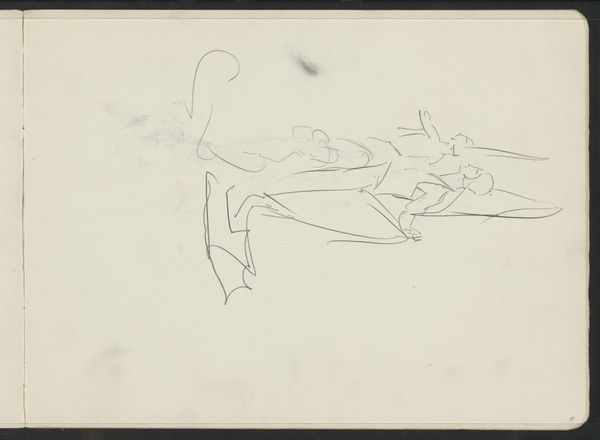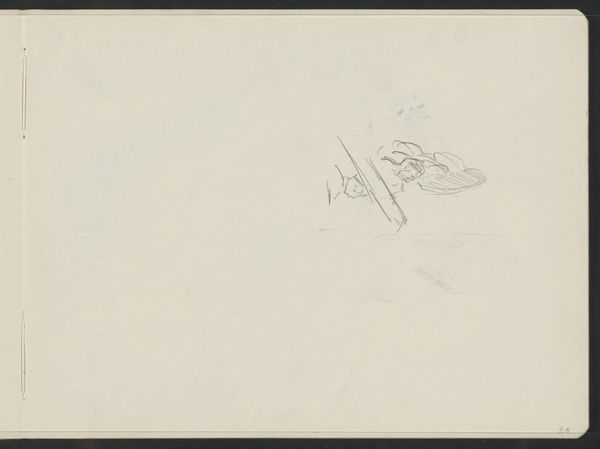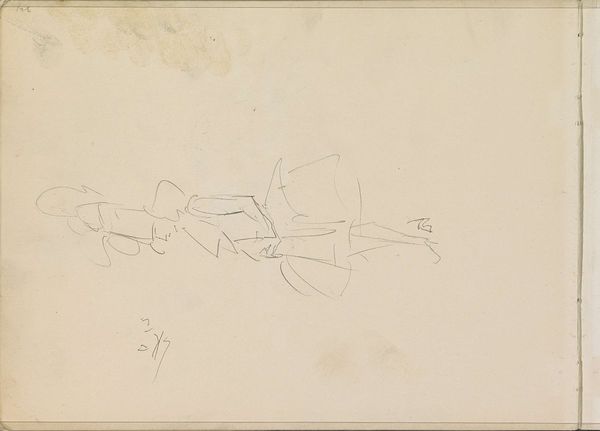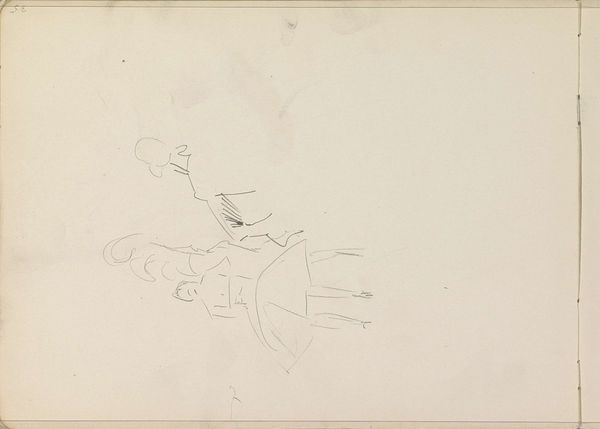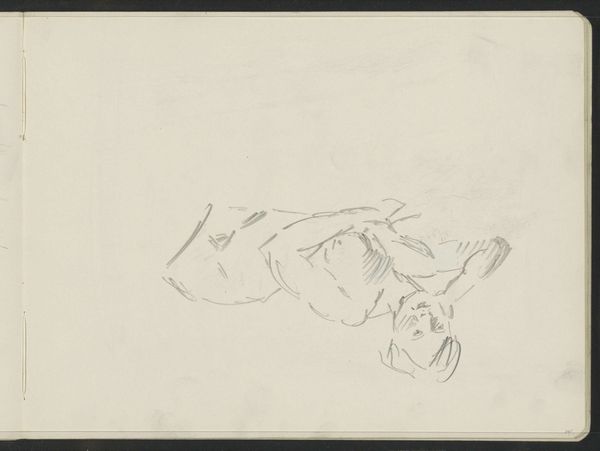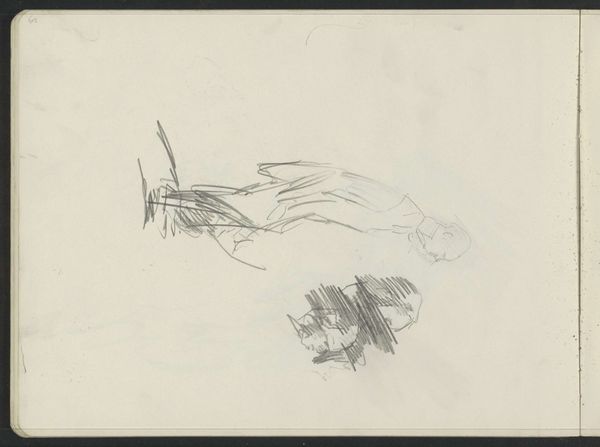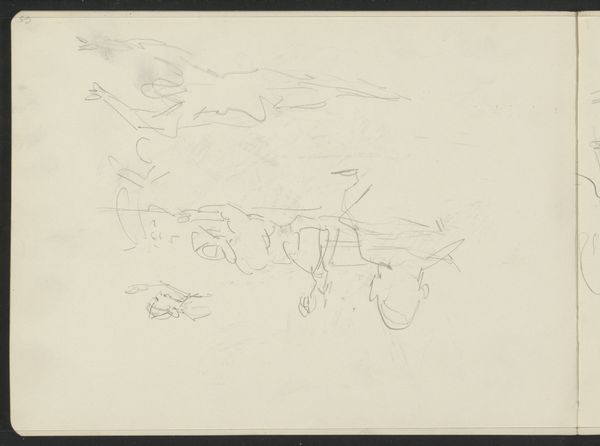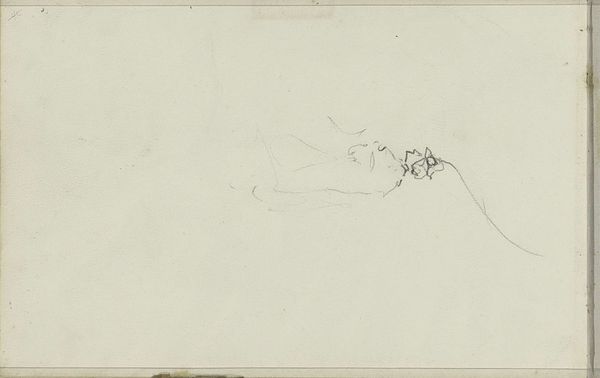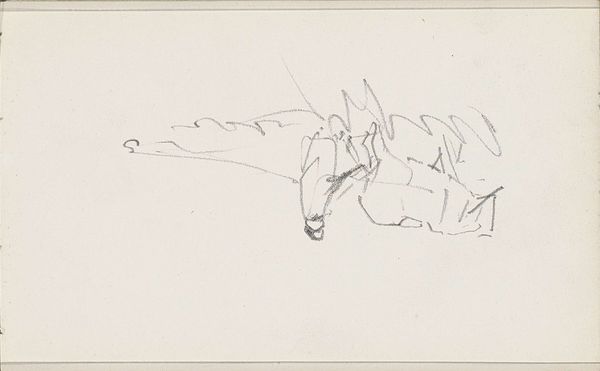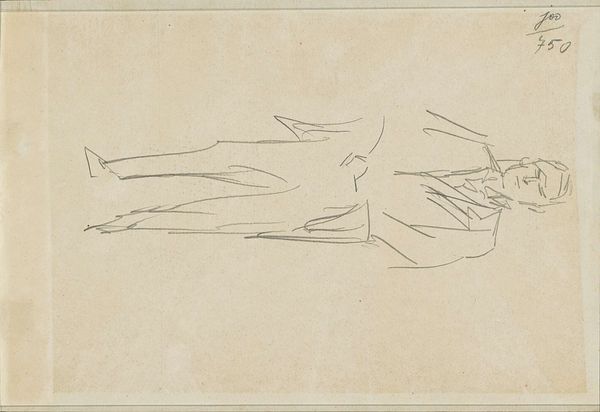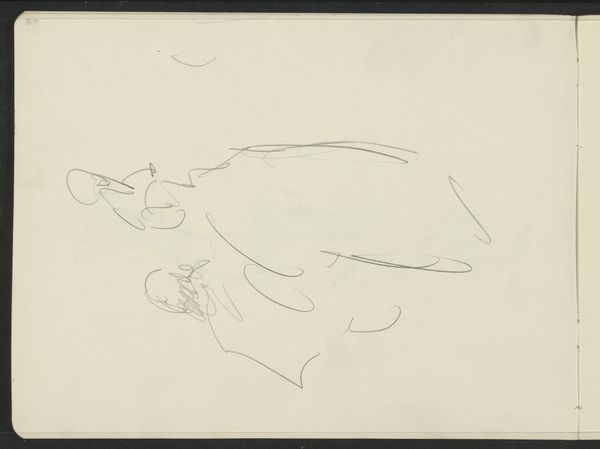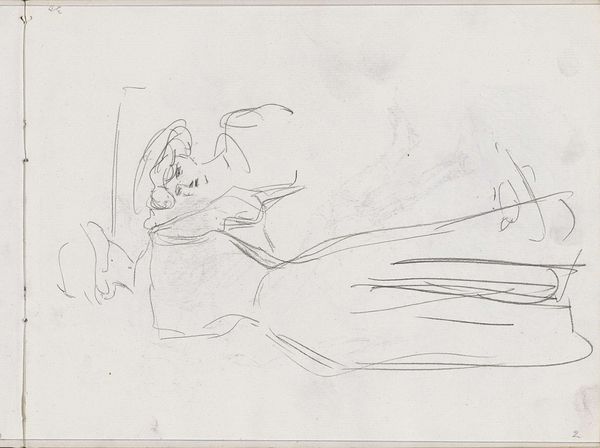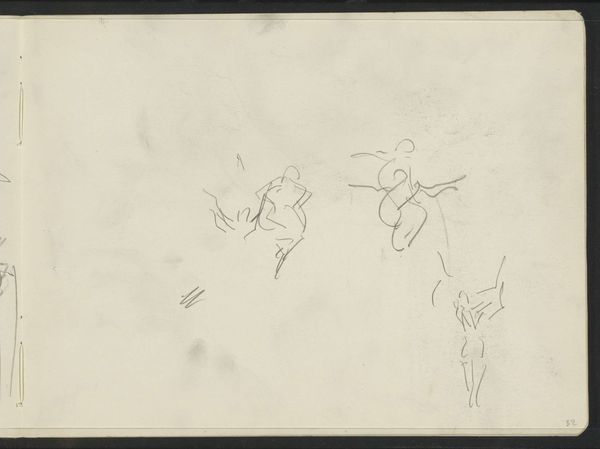
Copyright: Rijks Museum: Open Domain
Curator: Let’s turn our attention to a delicate drawing by Isaac Israels, "Artist in Costume, in Profile," created sometime between 1915 and 1925. Editor: It feels so fleeting, doesn't it? Just a few lines, capturing a momentary pose. You can almost see the graphite dust lifting off the page. Curator: Absolutely. It’s a study in capturing form with minimal means. That single line denoting the nose, the implied shape of the eye – he’s relying on our minds to fill in so much. And the costume, only suggested by the cut of the cloth at the collar. What does the implied theatrical garb tell you? Editor: It suggests the ready-made identities available through garments. Consider the cultural context. Drawing supplies and even just paper were precious resources still in those interwar years; its quick execution suggests artistic necessity, finding immediacy when time and materials were in short supply. This probably was for practice, which meant economizing, focusing on a person with a singular characteristic, like his coat. Curator: It is tempting to delve into the symbolic implications. The figure's bowed head could signal contemplation. Is he thinking about performance, the artist and his role? Perhaps the anonymity enhances this introspective nature. The costume itself invites interpretations—what kind of artist? What stories is he meant to evoke? Editor: The very nature of graphite is telling. Its industrial production democratized access to drawing materials. Graphite's a material of the modern age, suited to capturing a transient subject in a few lines. Not for oil or some fussy pigment when we want to rapidly produce. I see not an end-goal 'portrait' so much as just sketching a form. The material itself drove the mode. Curator: It's remarkable how much narrative can be gleaned from such sparse marks. Thank you, I find it intriguing how his technique can trigger these interpretations and a consideration of our perceptions. Editor: It’s been a pleasure exploring it with you. That's why the choice of materials and methods tells stories far beyond the lines on the paper.
Comments
No comments
Be the first to comment and join the conversation on the ultimate creative platform.
